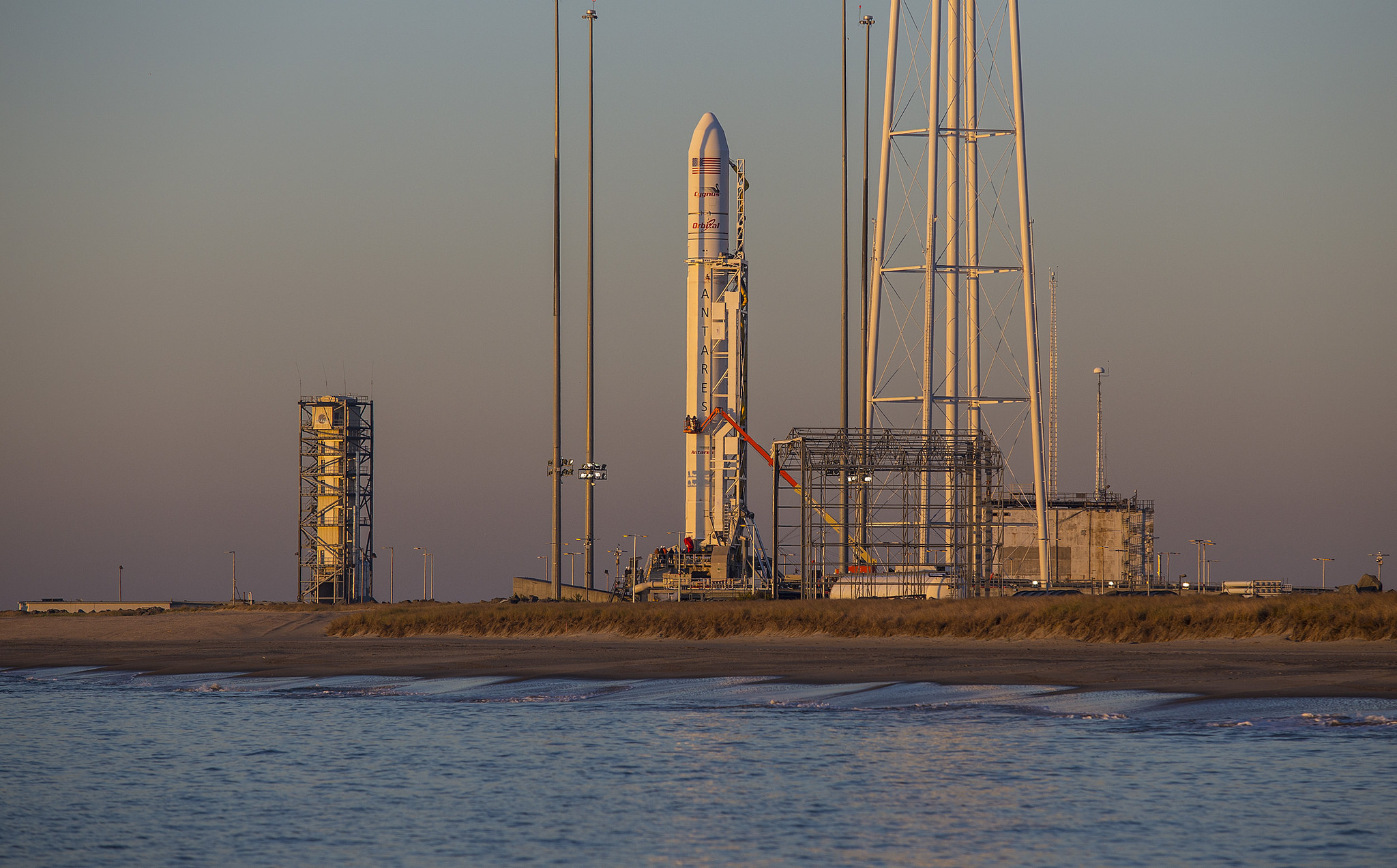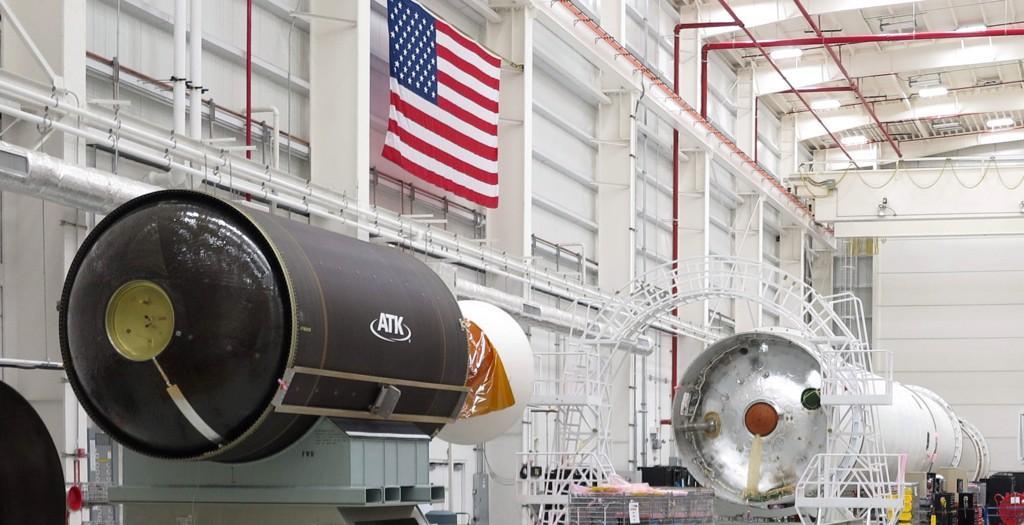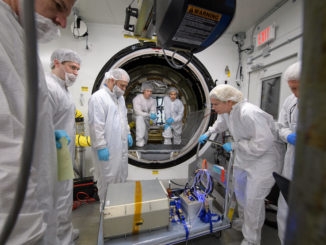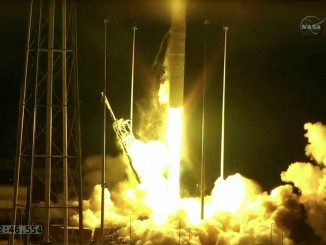Updated after the scrub of Monday’s launch attempt.

An upgraded Castor 30XL upper stage motor will provide the Antares rocket with an extra boost during launch Tuesday with supplies and experiments for the International Space Station, a critical upgrade Orbital Sciences says will ensure it meets contractual cargo delivery requirements.
Packed with additional propellant and fitted with a modified exhaust nozzle, the upper stage will give the Antares rocket power to lift about 800 more kilograms — about 1,760 pounds — more mass into the space station’s orbit, officials said.
Less powerful Castor 30 motors built by ATK have flown on the Antares rocket’s previous four missions. The Castor 30XL upper stage on Tuesday’s launch of the Orb-3 resupply flight is longer than the earlier motors.
“The Castor 30XL is an extended-length version of the Castor family of motors that we’ve flown on all of the first four missions,” said Mike Pinkston, the Antares rocket’s program manager at Orbital Sciences Corp. “In specific terms, it’s about double the total impulse compared to the original Castor 30B on Orb-1 and Orb-2 — a little higher thrust and burns about 30 seconds longer than the Castor 30B — so overall it has a much higher performance.”
Orbital Sciences’ $1.9 billion cargo resupply contract with NASA requires delivery of 20 metric tons, or about 44,000 pounds, of supplies to the space station over eight missions with the Antares rocket and Cygnus supply ship.
Frank Culbertson, executive vice president of Orbital’s advanced programs group, said Sunday that the Orb-3 mission — the third of the eight-mission slate — will take up about 5,000 pounds.
Including a demonstration flight last year, Orbital will have delivered more than 13,000 pounds of cargo to the space station with a successful Orb-3 mission, Culbertson said.
The Cygnus spacecraft has removed about 10,000 pounds of trash and disposal cargo from the space station so far. That number will increase to about 15,000 pounds after Orb-3’s departure in December.
Orbital plans to introduce an enlarged Cygnus cargo module on the next mission set for launch in April to provide more volume for supplies.

“When we won the contract, we already had plans for an performance enhancement program partway through the program to make sure we could in fact carry our contracted amount of 20 metric tons to ISS,” Culbertson said. “We started with lower delivery numbers to begin with, and then have gradually increased it as we work off our contingencies and our margins. But we needed this part of it — the enhanced cargo-carrying module, which is a meter longer, and the increased performance of the upper stage — to really meet our goals.”
The Antares rocket launching Tuesday — known as the 130 version — is about 8 feet taller than the launcher’s earlier configuration. Engineers added a spacer ring below the 12.8-foot-diameter nose cone — which is unchanged on this flight — to make more room for the larger Castor 30XL motor and the longer Cygnus cargo module on the next mission.
“I think it’s going to be a great enhancement to our cargo service, and we need it,” Pinkston said.
ATK finished development of the Castor 30XL in 2013, according to Jason Meredith, director of business development for ATK Aerospace Group’s defense and commercial division.
The upper stage is about 8 feet longer than the motors flown on the Antares rocket’s first four flights.
It weighs about 58,000 pounds with a load of pre-packed solid propellant and is about twice the size of the older Castor 30 motor, Meredith said.
“That’s mainly the the way it provdes the additional capability to the Antares — with the much larger mass of propellant,” Meredith said Monday. “It also has some design changes to the nozzle to provide more ISP, or impulse, to the system. Those are the main changes between the Castor 30XL and the other two versions.
“There’s more thrust and it burns a little bit longer, but to a large extent, it’s just more impulse — more total energy that it is able to impart to the launch vehicle and provide the additional performance,” Meredith said.
Follow Stephen Clark on Twitter: @StephenClark1.



